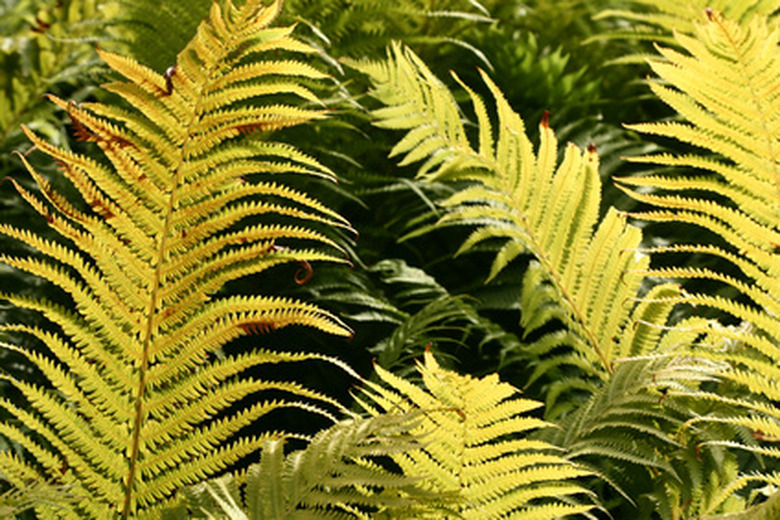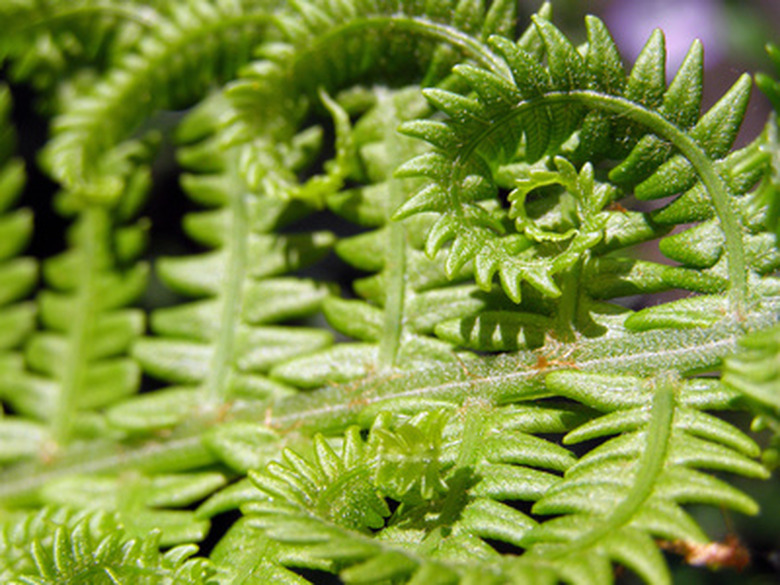My Fern Fronds Are Turning Brown
Ferns are among the most popular houseplants, but not every house is suited for them. You may find your fern fronds turning brown within weeks of bringing the plant home from the nursery. Prevent browning leaves with a knowledge of your fern's basic needs.
Ferns are among the most popular houseplants, but not every house is suited for them. You may find your fern fronds turning brown within weeks of bringing the plant home from the nursery. Prevent browning leaves with a knowledge of your fern's basic needs.
Moisture
Ferns prefer 40 to 50 percent humidity, but average homes have only 10 to 15 percent humidity. Many ferns have delicate leaves that turn brown when humidity drops. Misting is not always effective. Instead, place the potted fern on a dish of pebbles or gravel. Fill the dish with water to create a humid environment without waterlogged soil.
- Ferns are among the most popular houseplants, but not every house is suited for them.
- Instead, place the potted fern on a dish of pebbles or gravel.
Sun
Ferns are adapted to shady but sunlit conditions. Direct sunlight scorches the leaves, turning the entire side of a plant brown. Ensure that the fern receives filtered or indirect sunlight. A northern window is ideal. The angle of sunlight changes over time, and a fern may receive direct sun or even bright, reflected light as the sun shifts.
Nutrients
Despite the lush, rapid growth of many ferns, these plants are not heavy feeders. In fact, the opposite is true. Too much fertilizer burns the fronds, causing browning and dead leaves. Fertilize ferns only when they produce new growth, and use a liquid fertilizer at half the recommended dosage for houseplants. Avoid fertilizing during cooler months, when fern growth slows considerably.
- Ferns are adapted to shady but sunlit conditions.
- Too much fertilizer burns the fronds, causing browning and dead leaves.
Fern Leaves Are Turning Brown And Crispy
Deciduous ferns grow much like other perennial plants. It's best to leave these dead fronds until the spring, because they provide winter protection to the roots of the plant. In the spring, new growth emerges from the center of the plant as older leaves are pushed to the outside of the clump. Evergreen ferns include sword ferns (Polystichum munitum) and wood ferns (Dryopteris spp. ), both of which thrive in USDA zones 5 through 10. Nematodes are microscopic pests that can be controlled by cutting back and destroying any affected fronds.
References
- Purdue University Cooperative Extension Service: Ferns for Indoors
- The New Western Sunset Garden Book; Kathleen Norris Brenzel, 2012
- Penn State Extension: Fern Diseases
- Clemson Cooperative Extension: Hardy Ferns

